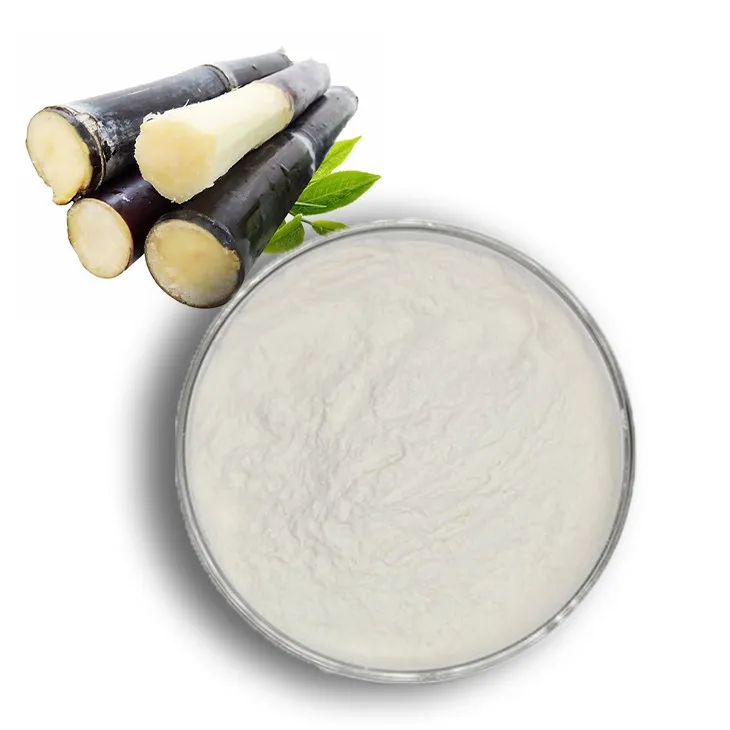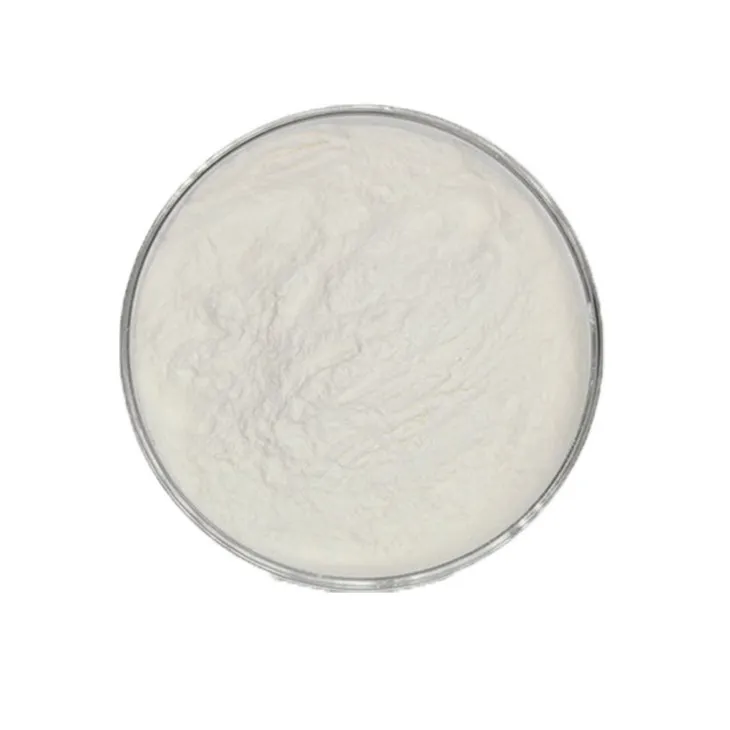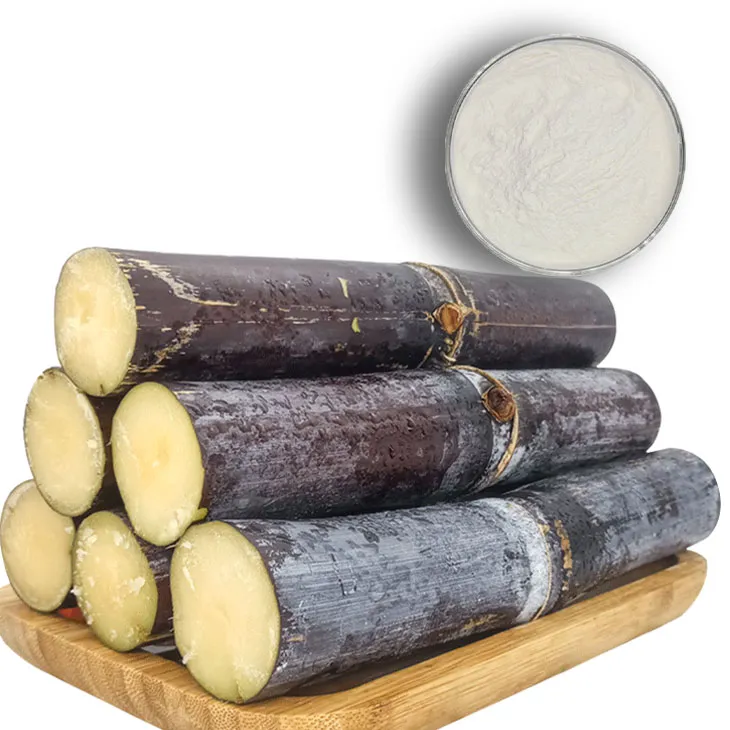- 0086-571-85302990
- sales@greenskybio.com
Components of fertilizers and feeds from sugarcane extracts.
2024-11-26

1. Introduction
Sugarcane is one of the most important crops globally, not only for sugar production but also for its potential in other industries. Cane extract has emerged as a valuable resource with significant potential in both fertilizer and feed components. The utilization of cane extract in these areas can contribute to sustainable agricultural development, which is crucial in the current context of environmental concerns and the need for efficient resource management.

2. Components of Cane Extract for Fertilizers
2.1 Organic Compounds and Soil Structure Improvement
Cane extract contains various organic compounds that play a vital role in improving soil structure. These compounds can enhance soil porosity, which is essential for root growth. Good soil porosity allows roots to penetrate easily, access nutrients, and oxygen more effectively. For example, polysaccharides present in cane extract can bind soil particles together, creating aggregates. This aggregation process increases the size of soil pores, thereby improving the overall soil structure.
Moreover, the improvement in soil structure also leads to enhanced water - holding capacity. Soils with better structure can retain more water, reducing the frequency of irrigation. This is particularly beneficial in regions with water scarcity or during dry seasons. The organic matter in cane extract can absorb and hold water, releasing it slowly to plant roots as needed.
2.2 Nutrient Release and Plant Nutrition
Cane extract contains several nutrients that are beneficial for plant growth. Some of these nutrients are released slowly over time, providing a long - term nutrient supply for plants. For instance, potassium is an important nutrient found in cane extract. Potassium is involved in many physiological processes in plants, such as photosynthesis, enzyme activation, and water regulation. The slow - release nature of potassium from cane extract ensures that plants have a continuous supply of this nutrient throughout their growth cycle.
In addition to potassium, cane extract may also contain other macronutrients like nitrogen and phosphorus, albeit in different forms and quantities. These nutrients are essential for plant growth and development. Nitrogen is a key component of proteins and chlorophyll, while phosphorus is involved in energy transfer and storage in plants. The presence of these nutrients in cane extract can supplement the soil's nutrient pool, especially in soils that are deficient in these elements.
2.3 Microbial Activity Promotion
The organic matter in cane extract can also stimulate microbial activity in the soil. Soil microbes play a crucial role in nutrient cycling and soil fertility. When cane extract is added to the soil, it provides a food source for microbes. Microbes break down the organic matter in the extract, releasing nutrients in a form that plants can absorb more easily. For example, certain bacteria can convert organic nitrogen in cane extract into ammonium and nitrate, which are the forms of nitrogen that plants can take up.
Additionally, some microbes can form symbiotic relationships with plant roots. Mycorrhizal fungi, for instance, can attach to plant roots and extend their hyphae into the soil, increasing the root's absorptive area. Cane extract can support the growth and activity of these beneficial microbes, thereby enhancing plant nutrition and overall health.

3. Components of Cane Extract for Feeds
3.1 Sugars as an Energy Source
One of the main components of cane extract that is valuable for feeds is sugars. Sugars such as sucrose are a rich source of energy for livestock. When animals consume cane extract - based feeds, the sugars are broken down during digestion to release energy. This energy is then used for various physiological functions, including growth, movement, and maintenance of body temperature.
For ruminant animals like cows and sheep, the fermentation process in their rumen can effectively utilize the sugars in cane extract. The bacteria in the rumen break down the sugars into volatile fatty acids, which are then absorbed and used as an energy source by the animals. The presence of sugars in cane extract - based feeds can reduce the need for other energy - rich feed ingredients, potentially lowering feed costs.
3.2 Bioactive Compounds and Animal Health
Cane extract may also contain bioactive compounds that can promote the growth and health of animals. For example, phenolic compounds present in cane extract have antioxidant properties. These antioxidants can scavenge free radicals in the animal's body, reducing oxidative stress. Oxidative stress can cause damage to cells and tissues, leading to various health problems in animals. By reducing oxidative stress, phenolic compounds in cane extract can improve the overall health and performance of livestock.
Another type of bioactive compound that may be present in cane extract is phytohormones. Phytohormones can have regulatory effects on animal growth and development. Although the mechanisms are not fully understood, some studies suggest that these compounds can influence processes such as cell division, growth factor regulation, and immune function in animals.
3.3 Nutritional Profile Complementation
Cane extract can also complement the nutritional profile of other feed ingredients. It may contain certain vitamins and minerals that are essential for animal health. For example, it could provide small amounts of vitamins like vitamin C or minerals like calcium and magnesium. These nutrients can fill the gaps in the nutritional requirements of animals when combined with other feed components.
In addition, cane extract - based feeds can improve the palatability of the overall feed. Animals are more likely to consume feeds that taste good. The sweet taste of cane extract can enhance the acceptability of the feed, ensuring that animals consume an adequate amount of nutrients.

4. Challenges and Considerations
4.1 Processing and Extraction Methods
One of the main challenges in utilizing cane extract for fertilizers and feeds is the development of efficient processing and extraction methods. The extraction process needs to be optimized to obtain the maximum amount of beneficial components while minimizing the cost and energy consumption. Different extraction methods can result in varying compositions of the extract, which can affect its effectiveness as a fertilizer or feed component.
For example, traditional extraction methods may not be able to fully extract all the valuable nutrients and bioactive compounds from cane. Newer techniques such as enzymatic extraction or supercritical fluid extraction may offer more efficient ways to extract these components, but they also come with higher costs and technical requirements.
4.2 Quality Control and Standardization
Ensuring the quality of cane extract - based fertilizers and feeds is crucial. There is a need for strict quality control and standardization procedures. The composition of cane extract can vary depending on factors such as the variety of sugarcane, the growing conditions, and the extraction process. Variations in composition can lead to inconsistent performance as a fertilizer or feed.
Standardization of cane extract - based products can help in ensuring their reliability and effectiveness. This includes setting standards for nutrient content, bioactive compound levels, and purity. Quality control measures should also include testing for contaminants such as heavy metals and pesticides, which can be harmful to plants or animals.
4.3 Environmental and Sustainability Considerations
The production of cane extract for fertilizers and feeds should also take into account environmental and sustainability considerations. Sugarcane cultivation already has an impact on the environment, including land use, water consumption, and greenhouse gas emissions. The extraction process should be designed in a way that minimizes further environmental impacts.
For example, using sustainable farming practices in sugarcane cultivation can reduce the environmental footprint. Additionally, the by - products of cane extract production should be managed in an environmentally friendly manner. They can be recycled or used for other purposes, such as bioenergy production, to maximize resource utilization and reduce waste.

5. Conclusion
Cane extract is a promising resource for both fertilizers and feeds. Its components offer a range of benefits for plant growth and animal health. However, there are challenges that need to be addressed, including processing methods, quality control, and environmental sustainability. By overcoming these challenges, the full potential of cane extract in fertilizer and feed applications can be realized, contributing to more sustainable agricultural systems. Understanding the components of cane extract for fertilizers and feeds is not only important for the agricultural industry but also for the overall well - being of the environment and the global food supply.
FAQ:
What are the main organic compounds in cane extract that can improve soil structure?
There are several main organic compounds in cane extract that can contribute to soil structure improvement. One of the important ones could be lignin - like substances. These can bind soil particles together, creating aggregates. Another might be certain types of polysaccharides which can increase the soil's water - holding capacity and porosity. However, more research is needed to fully identify and understand all of these compounds.
How do the nutrients in cane extract achieve slow - release for plant fertilization?
The nutrients in cane extract can achieve slow - release in a few ways. Some nutrients may be bound to complex organic molecules. As these organic molecules are decomposed by soil microorganisms gradually, the nutrients are released slowly. For example, if there are nutrient - rich complexes formed with proteins or polysaccharides in the cane extract, they will break down over time, providing a continuous supply of nutrients to the plants rather than a quick burst as in some synthetic fertilizers.
What specific sugars are present in cane extract that can be used as an energy source for livestock?
Cane extract contains sucrose, which is a major sugar present. Sucrose can be easily digested by livestock and converted into energy. Glucose and fructose may also be present in smaller amounts, and these sugars can also be utilized by the animals' digestive systems for energy production.
What are the potential bioactive compounds in cane extract for animal health?
There could be phenolic compounds in cane extract which have antioxidant properties. These can help reduce oxidative stress in animals, promoting their overall health. Additionally, some flavonoids might be present. Flavonoids can have anti - inflammatory effects and may also play a role in enhancing the immune system of livestock.
How can the use of cane extract in fertilizers and feeds contribute to sustainable agricultural development?
The use of cane extract in fertilizers and feeds can contribute to sustainable agricultural development in multiple ways. For fertilizers, as it is a natural product, it reduces the reliance on synthetic fertilizers which often require significant energy input in their production and can have negative environmental impacts such as soil acidification. In terms of feeds, using cane extract can provide a more natural and potentially cost - effective source of nutrition for livestock, reducing the need for some artificial additives. Also, since cane is a renewable resource, its use in both fertilizers and feeds is more sustainable in the long - run.
Related literature
- The Composition and Utilization of Cane Extracts in Agriculture"
- "Beneficial Components of Cane Extract for Soil Fertility"
- "Cane Extract: A Novel Feed Ingredient for Livestock Nutrition"
- ▶ Hesperidin
- ▶ citrus bioflavonoids
- ▶ plant extract
- ▶ lycopene
- ▶ Diosmin
- ▶ Grape seed extract
- ▶ Sea buckthorn Juice Powder
- ▶ Beetroot powder
- ▶ Hops Extract
- ▶ Artichoke Extract
- ▶ Reishi mushroom extract
- ▶ Astaxanthin
- ▶ Green Tea Extract
- ▶ Curcumin Extract
- ▶ Horse Chestnut Extract
- ▶ Other Problems
- ▶ Boswellia Serrata Extract
- ▶ Resveratrol Extract
- ▶ Marigold Extract
- ▶ Grape Leaf Extract
- ▶ blog3
- ▶ Aminolevulinic acid
- ▶ Cranberry Extract
- ▶ Red Yeast Rice
- ▶ Red Wine Extract
-
Ginseng Root Extract
2024-11-26
-
Phyllanthus Emblica Extract
2024-11-26
-
Polygonum Cuspidatum Extract
2024-11-26
-
Elderberry Extract
2024-11-26
-
Green coffee bean Extract
2024-11-26
-
Hesperidin
2024-11-26
-
Rose Hip Extract
2024-11-26
-
Nutmeg Extract
2024-11-26
-
Agaricus Blazei Extract
2024-11-26
-
Resveratrol extract
2024-11-26





















